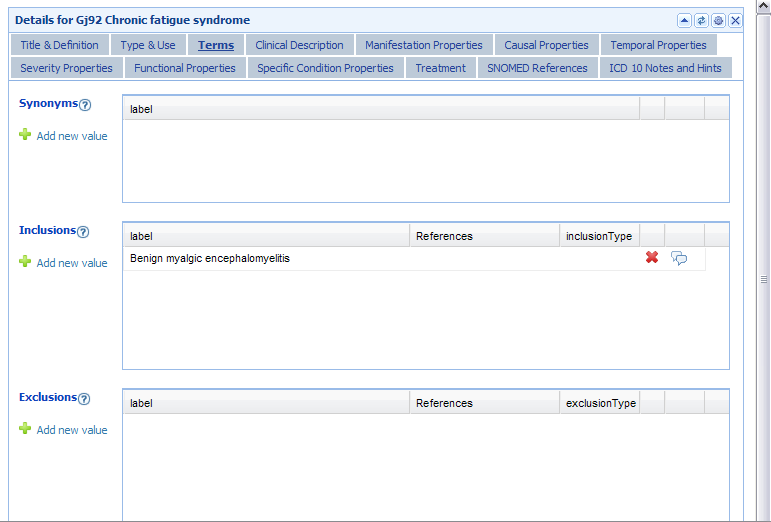Dx Revision Watch
Suzy Chapman Owner of Dx Revision Watch
- Messages
- 3,061
- Location
- UK
WHO announces revised ICD Revision Timelines (18 May 2011)
18 May 2011
[Note: This information does not apply to the forthcoming US specific Clinical Modification of ICD-10, called ICD-10-CM, which is scheduled for implementation in October 2013.]
The following has just been published on the WHO's website. Note that the original timeline had scheduled presentation to the World Health Assembly in May 2014 for pilot implementation in 2014. This most recent timeline for ICD-11 Revision suggests that implementation is being postponed until 2015.
I'll post further information on viewing the drafting platform as it becomes available. The last time the drafting platorm was in the public domain was November 2010.
http://www.who.int/classifications/icd/revision/timeline/en/
ICD Revision Timelines
May 2011
Open ICD-11 Alpha Browser to the public for viewing
July 2011
Open ICD-11 Alpha Browser to the public for commenting
May 2012
Open ICD-11 Beta to the public
ICD-11 Beta Information
WHO will engage with individuals from an outside community to participate in the ICD revision process.
Individuals will be allowed to:
-------------------------------
Screenshots from the drafting platform, as it had stood between June and November, last year, can be seen in this post:
http://forums.phoenixrising.me/show...E.-Association&p=167301&viewfull=1#post167301
A brief summary of the proposals for the classification of PVFS, (B)ME and CFS as they stood in June-November, last year:
Suzy Chapman
_____________________
me.agenda@virgin.net
http://dxrevisionwatch.wordpress.com
http://meagenda.wordpress.com
http://www.facebook.com/MEagenda
http://twitter.com/MEagenda
18 May 2011
[Note: This information does not apply to the forthcoming US specific Clinical Modification of ICD-10, called ICD-10-CM, which is scheduled for implementation in October 2013.]
The following has just been published on the WHO's website. Note that the original timeline had scheduled presentation to the World Health Assembly in May 2014 for pilot implementation in 2014. This most recent timeline for ICD-11 Revision suggests that implementation is being postponed until 2015.
I'll post further information on viewing the drafting platform as it becomes available. The last time the drafting platorm was in the public domain was November 2010.
http://www.who.int/classifications/icd/revision/timeline/en/
ICD Revision Timelines
May 2011
Open ICD-11 Alpha Browser to the public for viewing
July 2011
Open ICD-11 Alpha Browser to the public for commenting
May 2012
Open ICD-11 Beta to the public
ICD-11 Beta Information
WHO will engage with individuals from an outside community to participate in the ICD revision process.
Individuals will be allowed to:
- Make comments
- Make proposals to change ICD categories
- Participate in field trials
- Assist in translating
- May 2015
- Present the ICD-11 to the World Health Assembly
-------------------------------
Screenshots from the drafting platform, as it had stood between June and November, last year, can be seen in this post:
http://forums.phoenixrising.me/show...E.-Association&p=167301&viewfull=1#post167301
A brief summary of the proposals for the classification of PVFS, (B)ME and CFS as they stood in June-November, last year:
"Gj92* Chronic fatigue syndrome" is proposed as a Chapter 6 Diseases of the nervous system ICD Title term with a Definition and other "Content Model" parameters;
* "Gj92" is a "Sorting code" and not the ICD-11 code.
in the "Terms" Tab for Gj92 Chronic fatigue syndrome, "Benign myalgic encephalomyelitis" is listed as an Inclusion to "Gj92 Chronic fatigue syndrome".
in the Chapter 5 "Details" for F48.0 Neurasthenia
postviral fatigue syndrome is specified as an Exclusion to F48.0 Neurasthenia with the Reference
"G93.3 -> Gj92 Chronic fatigue syndrome"
in the Chapter 18 "Details" for R53 Malaise and Fatigue
fatigue syndrome postviral [sic] is specified as an Exclusion to R53 Malaise and Fatigue with the Reference
G93.3 -> Gj92 Chronic fatigue syndrome
* "Gj92" is a "Sorting code" and not the ICD-11 code.
in the "Terms" Tab for Gj92 Chronic fatigue syndrome, "Benign myalgic encephalomyelitis" is listed as an Inclusion to "Gj92 Chronic fatigue syndrome".
in the Chapter 5 "Details" for F48.0 Neurasthenia
postviral fatigue syndrome is specified as an Exclusion to F48.0 Neurasthenia with the Reference
"G93.3 -> Gj92 Chronic fatigue syndrome"
in the Chapter 18 "Details" for R53 Malaise and Fatigue
fatigue syndrome postviral [sic] is specified as an Exclusion to R53 Malaise and Fatigue with the Reference
G93.3 -> Gj92 Chronic fatigue syndrome
Suzy Chapman
_____________________
me.agenda@virgin.net
http://dxrevisionwatch.wordpress.com
http://meagenda.wordpress.com
http://www.facebook.com/MEagenda
http://twitter.com/MEagenda










